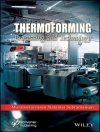This book highlights the applications of coupled bioluminescence assay techniques to real-world problems in drug discovery, environmental and chemical analysis, and biodefense. It separates theoretical aspects from the applied sections in a clear and readable way. Coupled Bioluminescent Assays, explains the uses of CB technologies across drug discovery to analyze toxicity, drug receptors, and enzymes. It covers applications in environmental analysis and biodefense, including cytotoxicity, fertilizer and explosives analysis, and nerve agent and pesticide detection. This is the premier reference on coupled bioluminescent assays for chemists, biochemists, and molecular biologists.
Tabella dei contenuti
PREFACE.
PART I BACKGROUND TO COUPLED BIOLUMINESCENT ASSAYS.
1 Introduction.
1.1 Introduction to Coupled Bioluminescent Assays.
1.2 Luminescent Technologies of the Life Sciences.
1.3 Varieties of Fluorometric Assays.
1.4 Chemiluminescence and Bioluminescence.
1.5 Common Bioluminescence Systems.
1.6 A Coupled Bioluminescent Reaction.
1.7 Summary.
2 Coupled Bioluminescent Reactions in Practice.
2.1 Principles of Coupled Bioluminescent Reactions.
2.2 Instrumentation and Equipment for Coupled Bioluminescent Assays.
2.3 Coupled Bioluminescent Assay Procedures and Precautions.
2.4 Data Handling for Coupled Bioluminescent Assays.
2.5 Comparison of Coupled Bioluminescent Assays with Other Methods.
PART II BIOMEDICAL APPLICATIONS OF COUPLEDBIOLUMINESCENCE.
3 Coupled Bioluminescent Cytotoxicity Assays.
3.1 Introduction.
3.2 Membrane Integrity Assays.
3.3 A Coupled Bioluminescent Assay for Enzyme Release: The G3PDH-Release Assay.
3.4 Viability Assays.
4 The Role of Coupled Bioluminescent Assays in Kinase Screening and Study.
4.1 The Many Roles of Kinases in Biology.
4.2 Current Standard Kinase Assays.
4.3 Coupled Bioluminescent Kinase Assays.
4.4 Conclusions.
5 Coupled Bioluminescent Phosphatase Assays.
5.1 Introduction.
5.2 Phosphatases.
5.3 Contemporary Phosphatase Assay Technologies.
5.4 CB Phosphatase Assays.
5.5 Conclusions.
6 Acetylcholinesterase.
6.1 Introduction.
6.2 Established ACh E Assay Methods.
6.3 Recent Developments in ACh E Assay Methods.
6.4 Evaluation of Current ACh E High-Throughput Screening Methods.
6.5 Coupled Bioluminescent Assays of ACh E Activity.
6.6 Comparison of Coupled Bioluminescent and Other Methods of Measuring ACh E Activity.
7 Measurement of Nitric Oxide Synthase Activity by Coupled Bioluminescence.
7.1 Introduction.
7.2 Current NOS Assays.
7.3 Conclusions.
8 The Coupled Bioluminescent Pyrophosphorolysis Assay.
8.1 Introduction.
8.2 Genetic Variation in Modern Medicine.
8.3 DNA Complementarity.
8.4 The READIT® Pyrophosphorolysis Assay.
9 Coupled Luminescent Assays of G-Protein-Coupled Receptors.
9.1 Introduction to G-Protein-Coupled Receptors.
9.2 GPCR Assay Methods.
9.3 Summary.
10 Coupled Bioluminescent Protease Assays.
10.1 Introduction.
10.2 Protease Assays.
10.3 Coupled Bioluminescent Protease Assays.
10.4 Summary.
11 Coupled Luminescent Assays Involving Aequorin.
11.1 Introduction to Aequorin.
11.2 Detection of Calcium in Practice.
12 Coupled Bioluminescent Reporter Assays.
12.1 Introduction to Reporter Assays.
12.2 Luciferases as Reporters of Promoter Activities.
12.3 Aequorin as a Reporter Enzyme.
12.4 Vectors for Use in Reporter Assays.
12.5 Summary.
13 Coupled Bioluminescent Assays: Regulatory Concerns.
13.1 Introduction.
13.2 Regulatory Aspects of Assay Development.
13.3 Summary.
PART III OTHER APPLICATIONS OF COUPLEDBIOLUMINESCENCE.
14 Coupled Bioluminescent Determination of Bioburden and Sterility.
14.1 Introduction.
14.2 Rapid Methods of Bioburden and Sterility Assessment.
15 Environmental Applications of Coupled Bioluminescent Assays.
15.1 Introduction.
15.2 Current Methods for Environmental Monitoring of Water Quality.
15.3 Methods of Monitoring Stream Water and Lake Water.
15.4 Methods of Monitoring Drinking Water.
Appendix A: One-Letter Amino Acid Abbreviations.
Glossary.
Bibliography.
Index.
Circa l’autore
Michael J. Corey, PHD, is a consulting biochemist and a leading authority on coupled bioluminescent assays. A former head of assay development in biotechnology, he is a founding member of the Scientific Advisory Board of Cell Technology, Inc. Dr. Corey holds key patents in the field of coupled bioluminescence.












